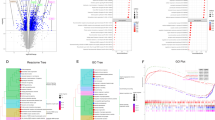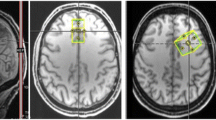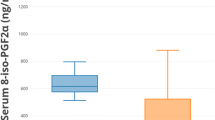Abstract
Although stress has been implicated in the pathophysiology of autistic spectrum disorder (ASD), it is not known whether glucocorticoid receptor (GR) levels are altered in the brain of subjects with ASD. The messenger RNA (mRNA) levels of GR isoforms (GRα, GRβ, GRγ, and GRP), mineralocorticoid receptor (MR), GR co-chaperones (FKBP5, PTGES3, and BAG1), and inflammatory cytokines (IL-6, IL-1β, and IFN-γ) were examined in the postmortem middle frontal gyrus tissues of 13 ASD and 13 age-matched controls by qRT-PCR. The protein levels were examined by Western blotting. We found significant decreases in GRα (64 %), GRγ (48 %), GRP (20 %) and MR (46 %) mRNA levels in ASD subjects as compared to controls. However, significant increases in FKBP5 (42 %) and PTGES3 (35 %) mRNA levels were observed in ASD subjects. There were no differences in the mRNA levels of GRβ and BAG1 in ASD subjects as compared to controls. MR mRNA was found to be negatively correlated with the diagnostic score for abnormality of development. On the protein level, significant reductions in GR and MR, but no change in FKBP5 and PTGES3 were found in ASD subjects as compared to controls. Moreover, we observed significant increases in IL-1β and IFN-γ mRNA levels in ASD subjects, and these cytokines were negatively associated with GR levels. Our data, for the first time, reports dysregulation of GR, MR, FKBP5, and PTGES3 in ASD and suggest a possible role of inflammation in altered GR function in ASD.



Similar content being viewed by others
Abbreviations
- ADI-R:
-
Autism diagnostic interview revised
- ASD:
-
Autism spectrum disorders
- BAG1:
-
BCL2-associated athanogene
- GRα:
-
Glucocorticoid receptor alpha
- FKBP5:
-
FK506 binding protein 51
- IFN-γ:
-
Interferon-gamma
- IL-1β:
-
Interleukin-1beta
- IL-6:
-
Interleukin-6
- GRβ:
-
Glucocorticoid receptor beta
- GRγ:
-
Glucocorticoid receptor gamma
- GRP:
-
Glucocorticoid receptor P
- PTGES3:
-
Prostaglandin E synthase 3 (cytosolic)
- MR:
-
Mineralocorticoid receptor
References
Yamazaki K, Saito Y, Okada F, Fujieda T, Yamashita I (1975) An application of neuroendocrinological studies in autistic children and Heller’s syndrome. J Autism Child Schizophr 5:323–332
Richdale AL, Prior MR (1992) Urinary cortisol circadian rhythm in a group of high-functioning children with autism. J Autism Dev Disord 22:433–447
Nir I, Meir D, Zilber N, Knobler H, Hadjez J, Lerner Y (1995) Brief report: circadian melatonin, thyroid-stimulating hormone, prolactin, and cortisol levels in serum of young adults with autism. J Autism Dev Disord 25:641–654
Jansen LM, Gispen-de Wied CC, Wiegant VM, Westenberg HG, Lahuis BE, van Engeland H (2006) Autonomic and neuroendocrine responses to a psychosocial stressor in adults with autistic spectrum disorder. J Autism Dev Disord 36:891–899
Corbett BA, Schupp CW, Lanni KE (2012) Comparing biobehavioral profiles across two social stress paradigms in children with and without autism spectrum disorders. Mol Autism 17:13
Lanni KE, Schupp CW, Simon D, Corbett BA (2012) Verbal ability, social stress, and anxiety in children with autistic disorder. Autism 16:123–138
Levine TP, Sheinkopf SJ, Pescosolido M, Rodino A, Elia G, Lester B (2012) Physiologic arousal to social stress in children with autism spectrum disorders: a Pilot Study. Res Autism Spectr Disord 6:177–183
Kolevzon A, Gross R, Reichenberg A (2007) Prenatal and perinatal risk factors for autism: a review and integration of findings. Arch Pediatr Adolesc Med 161:326–333
Gardener H, Spiegelman D, Buka SL (2009) Prenatal risk factors for autism: comprehensive meta-analysis. Br J Psychiatry 195:7–14
Burstyn I, Sithole F, Zwaigenbaum L (2010) Autism spectrum disorders, maternal characteristics and obstetric complications among singletons born in Alberta. Can Chronic Dis Can 30:125–134
Franklin TB, Linder N, Russig H, Thöny B, Mansuy IM (2011) Influence of early stress on social abilities and serotonergic functions across generations in mice. PLoS One 6, e21842
Leussis MP, Freund N, Brenhouse HC, Thompson BS, Andersen SL (2012) Depressive-like behavior in adolescents after maternal separation: sex differences, controllability, and GABA. Dev Neurosci 34:210–217
Bardeleben U, Holsboer F (1989) Cortisol response to a combined dexamethasone-human corticotrophin-releasing hormone challenge in patients with depression. J Neuroendocrinol 1:485–488
Bamberger CM, Schulte HM, Chrousos GP (1996) Molecular determinants of glucocorticoid receptor function and tissue sensitivity to glucocorticoids. Endocr Rev 17:245–261
Beato M, Herrlich P, Schütz G (1995) Steroid hormone receptors: many actors in search of a plot. Cell 83:851–857
Hollenberg SM, Weinberger C, Ong ES, Cerelli G, Oro A, Lebo R, Thompson EB, Rosenfeld MG et al (1986) Primary structure and expression of a functional human glucocorticoid receptor cDNA. Nature 318:635–641
Oakley RH, Sar M, Cidlowski JA (1996) The human glucocorticoid receptor beta isoform.Expression, biochemical properties, and putative function. J Biol Chem 271:9550–9559
Oakley RH, Cidlowski JA (2011) Cellular processing of the glucocorticoid receptor gene and protein: new mechanisms for generating tissue-specific actions of glucocorticoids. J Biol Chem 286:3177–3184
Reul JM, de Kloet ER (1985) Two receptor systems for corticosterone in rat brain: microdistribution and differential occupation. Endocrinology 117:2505–2511
Grad I, Picard D (2007) The glucocorticoid responses are shaped by molecular chaperones. Mol Cell Endocrinol 275:2–12
Wochnik GM, Rüegg J, Abel GA, Schmidt U, Holsboer F, Rein T (2005) FK506-binding proteins 51 and 52 differentially regulate dynein interaction and nuclear translocation of the glucocorticoid receptor in mammalian cells. J Biol Chem 280:4609–4616
Zhang X, Clark AF, Yorio T (2008) FK506-binding protein 51 regulates nuclear transport of the glucocorticoid receptor beta and glucocorticoid responsiveness. Invest Ophthalmol Vis Sci 49:1037–1047
Sullivan W, Stensgard B, Caucutt G, Bartha B, McMahon N, Alnemri ES, Litwack G, Toft D (1997) Nucleotides and two functional states of hsp90. J Biol Chem 272:8007–8012
Obermann WM, Sondermann H, Russo AA, Pavletich NP, Hartl FU (1998) In vivo function of Hsp90 is dependent on ATP binding and ATP hydrolysis. J Cell Biol 143:901–910
Wochnik GM, Young JC, Schmidt U, Holsboer F, Hartl FU, Rein T (2004) Inhibition of GR-mediated transcription by p23 requires interaction with Hsp90. FEBS Lett 560:35–38
Kanelakis KC, Morishima Y, Dittmar KD, Galigniana MD, Takayama S, Reed JC, Pratt WB (1999) Differential effects of the hsp70-binding protein BAG-1 on glucocorticoid receptor folding by the hsp90-based chaperone machinery. J Biol Chem 274:34134–34140
Segman RH, Shefi N, Goltser-Dubner T, Friedman N, Kaminski N, Shalev AY (2005) Peripheral blood mononuclear cell gene expression profiles identify emergent post-traumatic stress disorder among trauma survivors. Mol Psychiatry 10:500–513
Kato T (2007) Molecular genetics of bipolar disorder and depression. Psychiatry Clin Neurosci 61:3–19
Sinclair D, Fillman SG, Webster MJ, Weickert CS (2013) Dysregulation of glucocorticoid receptor co-factors FKBP5, BAG1 and PTGES3 in prefrontal cortex in psychotic illness. Sci Rep 3:3539
Carper RA, Courchesne E (2005) Localized enlargement of the frontal cortex in early autism. Biol Psychiatry 57(2):126–133
Barendse EM, Hendriks MP, Jansen JF, Backes WH, Hofman PA, Thoonen G, Kessels RP, Aldenkamp AP (2013) Working memory deficits in high-functioning adolescents withautism spectrum disorders: neuropsychological and neuroimaging correlates. J Neurodev Disord 5(1):14
Zikopoulos B, Barbas H (2013) Altered neural connectivity in excitatory and inhibitory cortical circuits in autism. Front Hum Neurosci 7:609
Irusen E, Matthews JG, Takahashi A, Barnes PJ, Chung KF, Adcock IM (2002) p38 Mitogen-activated protein kinase-induced glucocorticoid receptor phosphorylation reduces its activity: role in steroid-insensitive asthma. J Allergy Clin Immunol 109:649–657
Irwin MR, Miller AH (2007) Depressive disorders and immunity: 20 years of progress and discovery. Brain Behav Immun 21:374–383
Li X, Chauhan A, Sheikh AM, Patil S, Chauhan V, Li XM, Ji L, Brown T et al (2009) Elevated immune response in the brain of autistic patients. J Neuroimmunol 207:111–116
Crider A, Pandya CD, Peter D, Ahmed AO, Pillai A (2014) Ubiquitin-proteasome dependent degradation of GABAAα1 in autism spectrum disorder. Mol Autism 5:45
Gass P, Kretz O, Wolfer DP, Berger S, Tronche F, Reichardt HM, Kellendonk C, Lipp HP et al (2000) Genetic disruption of mineralocorticoid receptor leads to impaired neurogenesis and granule cell degeneration in the hippocampus of adult mice. EMBO Rep 1:447–451
Gass P, Reichardt HM, Strekalova T, Henn F, Tronche F (2001) Mice with targeted mutations of glucocorticoid and mineralocorticoid receptors: models for depression and anxiety? Physiol Behav 73:811–825
Zhou J, Cidlowski JA (2005) The human glucocorticoid receptor: one gene, multiple proteins and diverse responses. Steroids 70:407–417
Bamberger CM, Bamberger AM, de Castro M, Chrousos GP (1995) Glucocorticoid receptor beta, a potential endogenous inhibitor of glucocorticoid action in humans. J Clin Invest 95:2435–2441
Ray DW, Davis JR, White A, Clark AJ (1996) Glucocorticoid receptor structure and function in glucocorticoid-resistant small cell lung carcinoma cells. Cancer Res 56:3276–3280
Yudt MR, Cidlowski JA (2002) The glucocorticoid receptor: coding a diversity of proteins and responses through a single gene. Mol Endocrinol 16:1719–1726
de Lange P, Segeren CM, Koper JW, Wiemer E, Sonneveld P, Brinkmann AO, White A, Brogan IJ et al (2001) Expression in hematological malignancies of a glucocorticoid receptor splice variant that augments glucocorticoid receptor-mediated effects in transfected cells. Cancer Res 61:3937–3941
Pariante CM, Miller AH (2001) Glucocorticoid receptors in major depression: relevance to pathophysiology and treatment. Biol Psychiatry 49:391–404
Nair SC, Rimerman RA, Toran EJ, Chen S, Prapapanich V, Butts RN, Smith DF (1997) Molecular cloning of human FKBP51 and comparisons of immunophilin interactions with Hsp90 and progesterone receptor. Mol Cell Biol 17:594–603
Pratt WB, Toft DO (1997) Steroid receptor interactions with heat shock protein and immunophilin chaperones. Endocr Rev 18:306–360
Davies TH, Ning YM, Sánchez ER (2002) A new first step in activation of steroid receptors: hormone-induced switching of FKBP51 and FKBP52 immunophilins. J Biol Chem 277:4597–4600
Cheung J, Smith DF (2000) Molecular chaperone interactions with steroid receptors: an update. Mol Endocrinol 14:939–946
Taylor JL, Corbett BA (2014) A review of rhythm and responsiveness of cortisol in individuals with autism spectrum disorders. Psychoneuroendocrinology 49C:207–228
Dittmar KD, Demady DR, Stancato LF, Krishna P, Pratt WB (1997) Folding of the glucocorticoid receptor by the heat shock protein (hsp) 90-based chaperone machinery. The role of p23 is to stabilize receptor.hsp90 heterocomplexes formed by hsp90.p60.hsp70. J Biol Chem 272:21213–21220
Pace TW, Hu F, Miller AH (2007) Cytokine-effects on glucocorticoid receptor function: relevance to glucocorticoid resistance and the pathophysiology and treatment of major depression. Brain Behav Immun 21:9–19
Pariante CM, Pearce BD, Pisell TL, Sanchez CI, Po C, Su C, Miller AH (1999) The proinflammatory cytokine, interleukin-1alpha, reduces glucocorticoid receptor translocation and function. Endocrinology 140:4359–4366
Maddock C, Pariante CM (2001) How does stress affect you? An overview of stress, immunity, depression and disease. Epidemiol Psichiatr Soc 10:153–162
Vargas DL, Nascimbene C, Krishnan C, Zimmerman AW, Pardo CA (2005) Neuroglial activation and neuroinflammation in the brain of patients with autism. Ann Neurol 57:67–81
Morgan JT, Chana G, Pardo CA, Achim C, Semendeferi K, Buckwalter J, Courchesne E, Everall IP (2010) Microglial activation and increased microglial density observed in the dorsolateral prefrontal cortex in autism. Biol Psychiatry 68:368–376
Grigorenko EL, Han SS, Yrigollen CM, Leng L, Mizue Y, Anderson GM, Mulder EJ, de Bildt A et al (2008) Macrophage migration inhibitory factor and autism spectrum disorders. Pediatrics 122:e438–e445
Ashwood P, Krakowiak P, Hertz-Picciotto I, Hansen R, Pessah IN, Van de Water J (2011) Associations of impaired behaviors with elevated plasma chemokines in autism spectrum disorders. J Neuroimmunol 232:196–199
Acknowledgments
The authors would like to thank Diya Peter for her technical assistance. Human postmortem samples were obtained from the NICHD Brain and Tissue Bank for Developmental Disorders at the University of Maryland, Baltimore, MD. The Bank is funded by NIH Contract No. #HHSN275200900011C, Ref. No. NO1-HD-9-0011.
Conflict of Interest
The author(s) declare that they have no competing interests.
Author Contributions
NP and AC carried out the gene expression studies. CDP and AC performed the protein analysis. AOA carried out the statistical analysis and helped to draft the manuscript. AP designed the study and wrote the manuscript. All authors read and approved the final manuscript.
Author information
Authors and Affiliations
Corresponding author
Additional information
Neil Patel and Amanda Crider are co-first authors.
Electronic supplementary material
Below is the link to the electronic supplementary material.
Additional file 1: Table S1
List of primers used in the qRT-PCR. (DOCX 15 kb)
Additional file 2: Table S2
Correlations of mRNA transcripts with confounding variables. (DOCX 15 kb)
Additional file 3: Table S3
Correlations between stress-related mRNA transcripts. (DOCX 18 kb)
Additional file 4: Table S4
Correlation between cytokine and stress-related mRNA transcripts. (DOCX 14 kb)
Rights and permissions
About this article
Cite this article
Patel, N., Crider, A., Pandya, C.D. et al. Altered mRNA Levels of Glucocorticoid Receptor, Mineralocorticoid Receptor, and Co-Chaperones (FKBP5 and PTGES3) in the Middle Frontal Gyrus of Autism Spectrum Disorder Subjects. Mol Neurobiol 53, 2090–2099 (2016). https://doi.org/10.1007/s12035-015-9178-2
Received:
Accepted:
Published:
Issue Date:
DOI: https://doi.org/10.1007/s12035-015-9178-2




